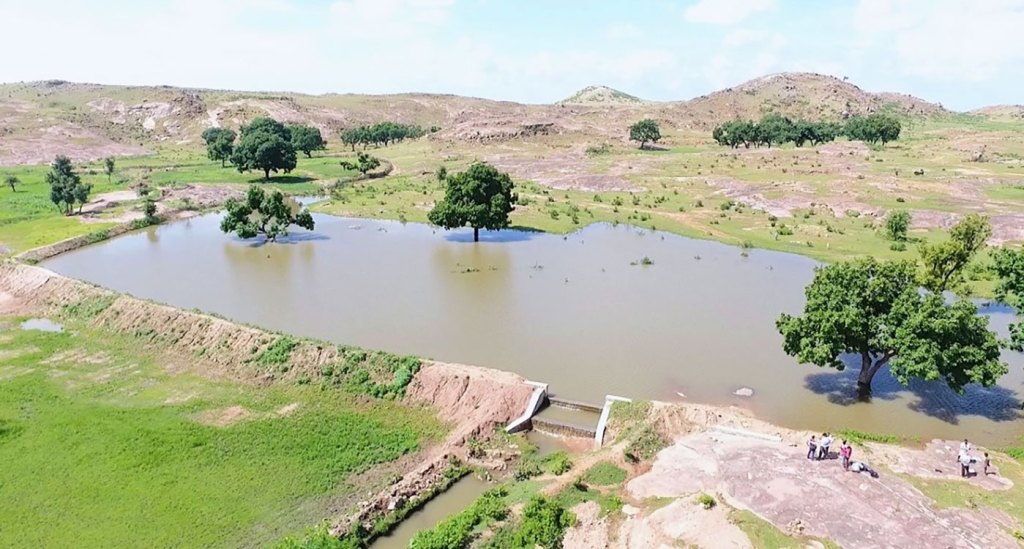
The world of water management is replete with stories about traditional systems that break down, such as the one we reported in November from Karnataka, South India. Age-old, decentralized approaches to managing water and watersheds do fall apart, leaving farmers high and dry. However, a remarkable study published in the Journal of Hydrology documents just how rapidly farmers can reap the benefits when an old system is restored and enhanced.
Researchers at the International Crops Research Institute for the Semi-Arid Tropics (ICRISAT) and their collaborators selected for a five-year study two degraded watersheds in the hilly, semi-arid region of Bundelkhand, which is divided between Madhya Pradesh and Uttar Pradesh in central India. Farmers in the region – a third to half of whom subsist below the poverty line – live in villages that traditionally have an earthen rainwater harvesting tank called a haveli. These havelis act as reservoirs during the monsoon (June to September), and after draining they are used for crop cultivation during the post-monsoon (October to February). By facilitating groundwater recharge the system ensures water security for households, livestock and agriculture. Farmers maintained their havelis together for hundreds of years, but many of the structures have collapsed along with the rural institutions that created them. When the monsoon comes now, rainwater quickly flows downhill. Rainfall is becoming more and more variable every year, with climate change cutting some rainy seasons down to a fraction. Yet even after a good monsoon, more than 80% of open wells soon run dry.



